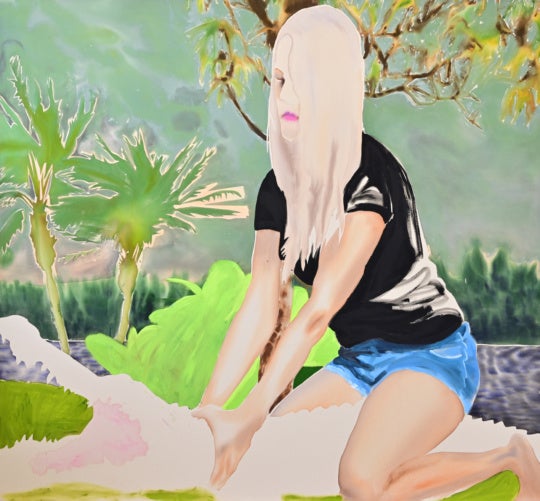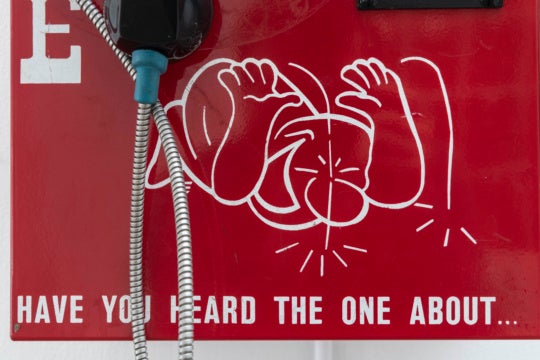
What does it mean to be black in America, and how does an artist capture that experience in a photo? It seems like an impossible mission—to try to grasp the experiences of an entire race of people in a picture. However, there are uniting incidents, moments, and images that create commonality among black people, and this is the place where the photographers in On Being Black, on view through January 22, at Arnika Dawkins Gallery, find beauty in the diaspora.
Most of the works comment on colorism in the African American community and also tackle specific social justice issues that impact black people. Colorism, for example, is a social hierarchy based on skin tone that bestows more privilege on light-skinned people than those who are dark. Dawkins, who curated the exhibition, included one of her own pieces in the show, titled Untitled from the Skin Tone Series, which presents a spectrum of people of varying skin complexions. It is a showcase of the wide range of skin complexions that are considered black; she positions dark skin on the far left and white on the far right. The line between black and white is indeed a thin one, as the lighter-skinned black people have more European features, such as strawberry blonde hair and blue eyes.

Atlanta artist Sheila Pree Bright is represented in the exhibition by an example from her Plastic Bodies series, for which she digitally merges real women’s faces and body features with those of Barbies. The woman in the portrait comprises half of a black Barbie, with a blue eye made up with shimmering gold and silver eye makeup, and half of an actual black woman, with a brown eye. The picture is jarring and brilliant, mostly because the “line” between the Barbie face and the woman’s face is seamless, which supports Pree Bright’s idea that by society’s embrace of Barbie as America’s standard of beauty, “Barbie has become real and people have become plastic.”

Hank Willis Thomas’s Black Power is of a yellow gold grill with the words “Black Power” spelled out in diamonds on the top and bottom teeth. What makes this photo so striking, aside from its large size, is its extreme closeup view. What makes this photo so challenging is that the message in this man’s mouth would likely be lost upon most people, because flashy accessories are normally associated with gangsters and rappers.

Another work that makes a strong statement is also one of the simplest in the exhibition. Made by Atlanta-based Le’Andra LeSeur, the youngest artist in the show, it’s titled Travyon and it shows a can of Arizona Watermelon Fruit Punch and a package of Wild Berry Skittles lying on the ground. The photo is accompanied by an audio mix — accessed through a pair of Beats headphones hanging next to the photo — of news reports and the reading of the jury’s verdict in the George Zimmerman trial. One of the recurring sound bites in the mix is about the stereotype of “pickanninies” eating watermelon, and whether it was a coincidence that Trayvon Martin was consuming a watermelon-flavored beverage. Black people in this country will never be able to imagine Arizona iced tea and Skittles without thinking of Trayvon, and LeSeur’s photo captures that new reality.
“On Being Black” offers views of meaningful moments in the African American experience as seen through the eyes of 23 black photographers. If there are 50 black people in a room, then there are 50 ways in which those people relate to the experiences that come with the social construct of blackness. The photos in the exhibition paint a broad stroke, or rather cast a wide lens, on what it can possibly mean to live as a black person in America, and for artists of color, the personal is inherently political.
Kelundra Smith is a freelance arts journalist and editor. Her work has been published in the Atlanta Journal Constitution, Atlanta magazine, Charleston Post & Courier, American Theatre Magazine, Dramatics magazine, Syracuse New Times, and on BroadwayWorld.com and ArtsATL.com. She has also done marketing and public relations consulting for nonprofit arts organizations, including Syracuse Stage, Alliance Theatre, Rialto Center for the Arts and Horizon Theatre Company. Follow her on Twitter @pieceofkay for musings on art, media, television, and everything else.




